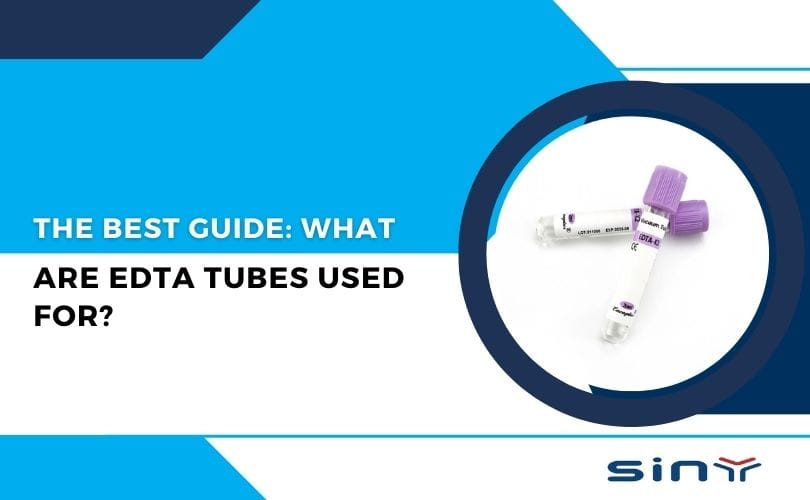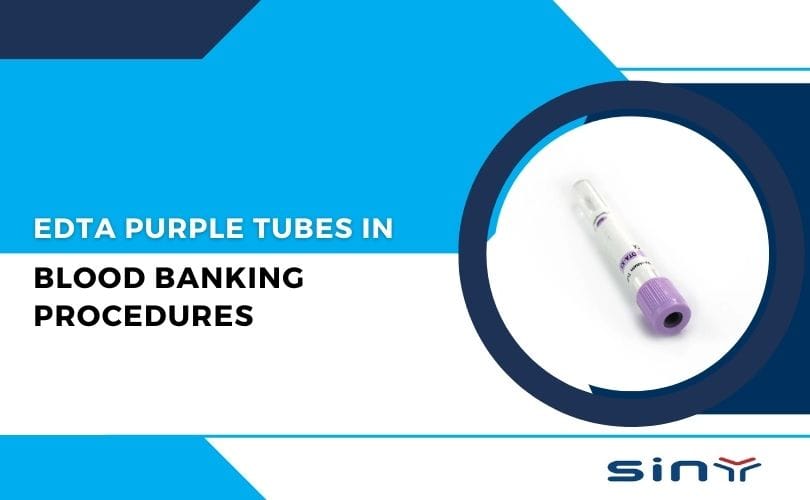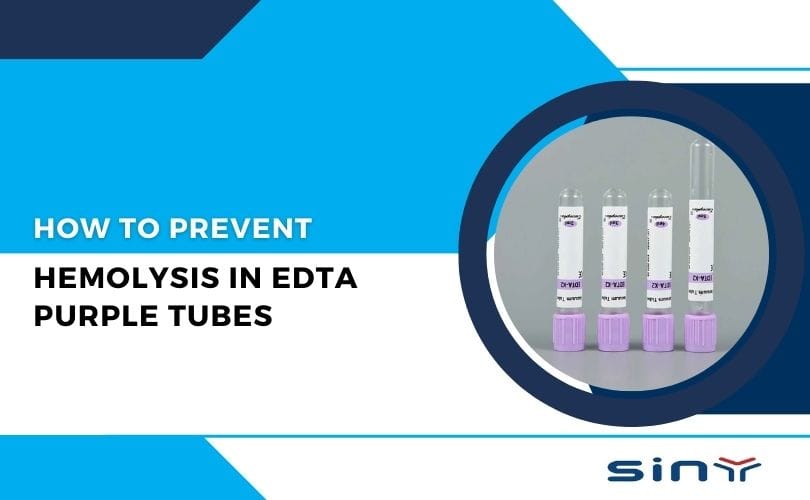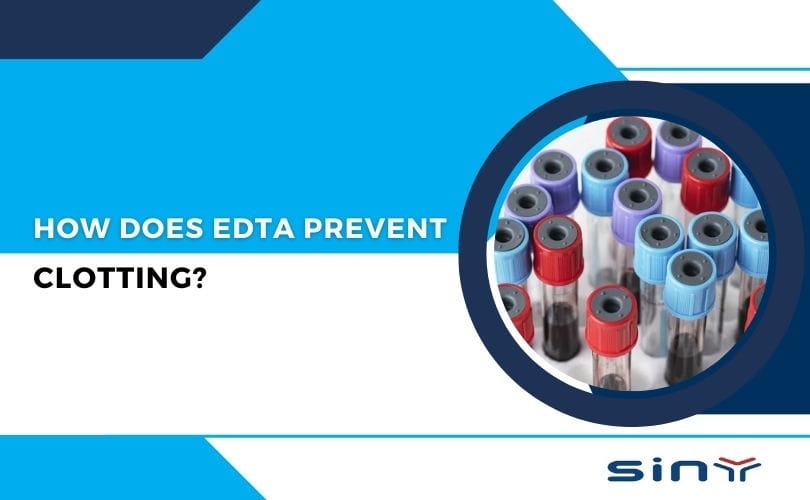In the world of clinical diagnostics, precision starts the moment blood enters a tube. Among all the color-coded blood collection tubes, the EDTA Purple Tube is one of the most widely used. It’s the go-to choice for complete blood counts (CBC), hemoglobin, hematocrit, and platelet evaluations.
So, what makes the purple tube so vital? The answer lies in its anticoagulant — EDTA. This chemical compound works by chelating calcium ions, preventing the blood from clotting and maintaining cellular integrity for accurate testing.
You can explore the full product details on the official EDTA Purple Top Blood Collection Tube page for technical specifications and usage guidelines.
What is an EDTA Purple Tube?
The EDTA Purple Tube is a blood collection tube containing EDTA (K2 or K3 salt) as an anticoagulant. The tube is usually color-coded purple or lavender according to international phlebotomy standards (CLSI).

EDTA binds calcium — an essential element for blood clotting. By removing calcium’s availability, EDTA prevents coagulation, keeping the blood sample stable for hematology or molecular testing.
For more details on types and applications, visit EDTA Tubes for Blood Collection.
Why the Purple Color Matters in Phlebotomy
The color coding in blood tubes isn’t random — it’s a standardized system to avoid confusion in busy laboratories. The purple (or lavender) top indicates that the tube contains EDTA as the anticoagulant.
Here’s why the color coding matters:
Instant Identification – In a fast-paced lab, the purple color immediately signals hematology testing.
Prevents Cross-Contamination – Using the wrong tube could lead to coagulation or sample interference.
Ensures Accuracy – The color system reduces human error during multi-sample collections.
In other words, the purple top ensures the right test is performed on the right sample — maintaining both speed and precision in diagnostics.
You can also refer to the step-by-step usage guide here: How to Use an EDTA Tube.
How Does EDTA Work in the Purple Top Tubes?
Understanding EDTA’s mechanism is key to appreciating its role in lab science. EDTA works by chelating — or binding — calcium ions. Calcium is critical for several steps in the coagulation cascade, which is the process by which blood naturally clots.
When EDTA binds calcium, the clotting pathway stops, leaving the blood in a liquid state suitable for analysis.
For deeper technical insight, check out How Does EDTA in Purple Top Tubes Work?.
Chemical Formula: C₁₀H₁₆N₂O₈
Function: Calcium chelation
Form Used: K2EDTA or K3EDTA
Applications of EDTA Purple Tubes in Phlebotomy
The purple tube is used across a range of diagnostic applications. Let’s explore where it fits in:
Hematology Testing
This is the most common use. EDTA maintains cell morphology, allowing accurate analysis of RBCs, WBCs, and platelets.
Blood Film Examination
For peripheral smears, EDTA blood provides a well-preserved cellular sample.
Molecular Testing
In PCR and DNA analysis, EDTA tubes are used because they don’t interfere with nucleic acids.
Crossmatching and Blood Typing
EDTA plasma is sometimes preferred for blood group determination.
For more product options suited for hematology, visit 10ml EDTA Purple Top Tubes: Uses & Benefits Guide.
EDTA vs. Other Blood Collection Tubes
| Tube Color | Additive | Purpose | Key Tests |
|---|---|---|---|
| Purple/Lavender | EDTA (K2/K3) | Anticoagulant (chelates calcium) | CBC, ESR, Hematology |
| Red | None (Plain) | Serum collection | Biochemistry, Serology |
| Green | Heparin | Inhibits thrombin | Plasma chemistry |
| Blue | Sodium Citrate | Binds calcium reversibly | Coagulation tests (PT, APTT) |
| Yellow | ACD or SPS | Preserves cellular components | DNA or culture testing |
This comparison helps lab professionals choose the right tube for the right test, minimizing diagnostic errors.
Quality Control Tips for Using EDTA Tubes
Quality assurance in sample collection is critical. Even the best EDTA tube won’t work properly if mishandled.
Here are some expert tips from Top Quality Control Tips for Using EDTA Tubes:
Invert the Tube Gently (8–10 times) immediately after collection to mix the blood and anticoagulant.
Avoid Vigorous Shaking — this can cause hemolysis.
Use the Correct Fill Volume — underfilling alters the EDTA-to-blood ratio, leading to false readings.
Store Properly — EDTA tubes should be kept at room temperature before processing.
EDTA Purple Tube vs. Other Tubes
While EDTA Purple Tubes are essential for hematology tests, other tubes serve different purposes:
- Red-Top Tubes: Contain no anticoagulant and are used for serum tests.
- Blue-Top Tubes: Contain sodium citrate and are used for coagulation studies.
- Green-Top Tubes: Contain heparin and are used for plasma tests.
Understanding these differences is crucial for accurate sample collection. Learn more about the various blood collection tubes on our EDTA Separation Gel Coagulation Blood Collection Tube.
Sustainability and Safe Disposal of EDTA Tubes
The medical industry is moving toward eco-friendly practices. Used EDTA tubes should be disposed of according to biohazard waste protocols — never in regular trash.
Best practices include:
Autoclaving before disposal
Using puncture-proof biohazard containers
Partnering with certified medical waste handlers
This ensures environmental safety while maintaining laboratory hygiene.
Why Choose High-Quality EDTA Tubes
When it comes to diagnostic accuracy, tube quality matters as much as technique. Cheaply made tubes can leach chemicals or cause hemolysis. Trusted manufacturers like SINYM Medical ensure that every product meets international quality standards.
You can also check their educational content on YouTube @sinymedical and learn about their product range on Made-in-China SINYM Medical Page
Summary
The EDTA Purple Tube is a cornerstone of phlebotomy, ensuring accurate and reliable blood sample collection for hematology tests. Its distinctive color is part of a standardized system that minimizes errors and enhances patient care. By understanding its purpose, applications, and proper usage, healthcare professionals can optimize diagnostic outcomes.
For more information about EDTA tubes and other phlebotomy tools, visit EDTA Tube or explore our About Us page. If you have any questions, feel free to Contact Us.







